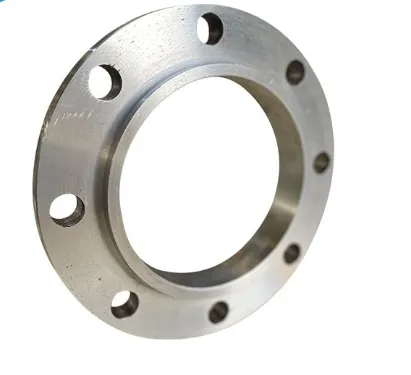-
Cangzhou Yulong Steel Co., Ltd.
-
Phone:
+86 13303177267 -
Email:
admin@ylsteelfittings.com
- English
- Arabic
- Italian
- Spanish
- Portuguese
- German
- kazakh
- Persian
- Greek
- French
- Russian
- Polish
- Thai
- Indonesian
- Vietnamese
- Zulu
- Korean
- Uzbek
- Hindi
- Serbian
- Malay
- Ukrainian
- Gujarati
- Haitian Creole
- hausa
- hawaiian
- Hebrew
- Miao
- Hungarian
- Icelandic
- igbo
- irish
- Japanese
- Javanese
- Kannada
- Khmer
- Rwandese
- Afrikaans
- Albanian
- Amharic
- Armenian
- Azerbaijani
- Basque
- Belarusian
- Bengali
- Bosnian
- Bulgarian
- Catalan
- Cebuano
- China
- China (Taiwan)
- Corsican
- Croatian
- Czech
- Danish
- Esperanto
- Estonian
- Finnish
- Frisian
- Galician
- Georgian
- Kurdish
- Kyrgyz
- Lao
- Latin
- Latvian
- Lithuanian
- Luxembourgish
- Macedonian
- Malgashi
- Malayalam
- Maltese
- Maori
- Marathi
- Mongolian
- Myanmar
- Nepali
- Norwegian
- Norwegian
- Occitan
- Pashto
- Dutch
- Punjabi
- Romanian
- Samoan
- Scottish Gaelic
- Sesotho
- Shona
- Sindhi
- Sinhala
- Slovak
- Slovenian
- Somali
- Sundanese
- Swahili
- Swedish
- Tagalog
- Tajik
- Tamil
- Tatar
- Telugu
- Turkish
- Turkmen
- Urdu
- Uighur
- Welsh
- Bantu
- Yiddish
- Yoruba

Nov . 25, 2024 08:04 Back to list
Understanding ANSI B16.5 Flange Slip-On Specifications and Applications for Engineering Use
Understanding Flange Slip-On ANSI B16.5 A Comprehensive Guide
When it comes to piping systems, the significance of flanges cannot be overstated. Flanges facilitate the connection of pipes, valves, pumps, and other equipment in a manner that allows for disassembly and reassembly, making maintenance and repairs more manageable. Among various flange types, the slip-on flange, particularly those conforming to ANSI B16.5 standards, has gained notable popularity in various industries, such as oil and gas, chemical processing, and water treatment. This article will delve into the characteristics, advantages, installation procedures, and applications of slip-on flanges as per ANSI B16.5 specifications.
What is a Slip-On Flange?
A slip-on flange is a type of flange that is designed to slip over the end of a pipe. This allows for a simple and effective connection to be made while ensuring a smooth inner surface that reduces turbulence in fluid flow. The ANSI B16.5 standard defines the dimensions, tolerances, and pressure-temperature ratings for these flanges, which are made from materials such as carbon steel, stainless steel, and alloy steel, among others.
Key Features of ANSI B16.5 Slip-On Flanges
1. Design Specifications Slip-on flanges come in various sizes and pressure ratings. ANSI B16.5 provides detailed guidelines that ensure compatibility with a wide range of piping systems. The standard specifies face types, including raised face and flat face designs, which cater to different sealing requirements.
2. Thickness and Strength The thickness of slip-on flanges is designed to withstand various pressures. Typically, these flanges provide good leak resistance when paired with appropriate gaskets.
3. Cost-Effectiveness Compared to other flanges, slip-on flanges are generally more economical due to lower manufacturing costs and the ease of installation, making them an attractive choice for many applications.
Advantages of Slip-On Flanges
The use of ANSI B16.5 slip-on flanges offers several benefits
- Ease of Installation The primary advantage of slip-on flanges is their straightforward installation. These flanges can be easily welded to a pipe, which simplifies the assembly process.
- Versatility They can be used in various applications, making them suitable for both high-temperature and high-pressure environments.
- Improved Flow Efficiency Unlike other types of flanges that may create turbulence at the joint, slip-on flanges have a smooth inside wall that helps maintain fluid flow efficiency
.flange slip on ansi b16 5

- Less Alignment Required Since they slip over the pipe, there's less need for precise alignment compared to other flanges, allowing for quicker installation.
Installation Guidelines
Installing ANSI B16.5 slip-on flanges requires careful attention to ensure a proper seal and connection. Here are some essential steps to consider
1. Preparation Ensure that the pipe ends and the flange are clean and free from debris. Any contaminants may affect the quality of the weld and the integrity of the seal.
2. Alignment Proper alignment is crucial. Align the flange with the pipe, maintaining a uniform gap around the circumference to ensure even heat distribution during welding.
3. Welding After aligning the flange, it should be tack-welded at multiple points to provide stability. Complete the welding process by weaving a continuous bead around the flange. Ensure the weld meets the specifications outlined in ANSI B16.5.
4. Inspection Once installed, inspect the flange for any defects. Look for signs of leakage, and consider pressure testing the system to confirm the integrity of the joints.
Applications
Slip-on flanges are used extensively across various industries, including
- Oil and Gas Often used to connect pipelines and valves due to their durability and ease of maintenance. - Water Treatment Ideal for fluid systems where corrosion resistance is essential. - Chemical Processing Used in systems that require frequent disassembly for cleaning and inspection.
Conclusion
ANSI B16.5 slip-on flanges represent an excellent choice for many piping applications due to their ease of use, cost-effectiveness, and ability to provide reliable seals. By adhering to proper installation procedures and guidelines outlined by industry standards, engineers and technicians can ensure the longevity and safety of their piping systems. As technology progresses, the demand for slip-on flanges will undoubtedly continue to grow, making them a staple in various industrial applications.
Latest news
-
ANSI 150P SS304 SO FLANGE
NewsFeb.14,2025
-
ASTM A333GR6 STEEL PIPE
NewsJan.20,2025
-
ANSI B16.5 WELDING NECK FLANGE
NewsJan.15,2026
-
ANSI B16.5 SLIP-ON FLANGE
NewsApr.19,2024
-
SABS 1123 FLANGE
NewsJan.15,2025
-
DIN86044 PLATE FLANGE
NewsApr.19,2024
-
DIN2527 BLIND FLANGE
NewsApr.12,2024
-
JIS B2311 Butt-Welding Fittings LR/SR 45°/90° /180°Seamless/Weld
NewsApr.23,2024











